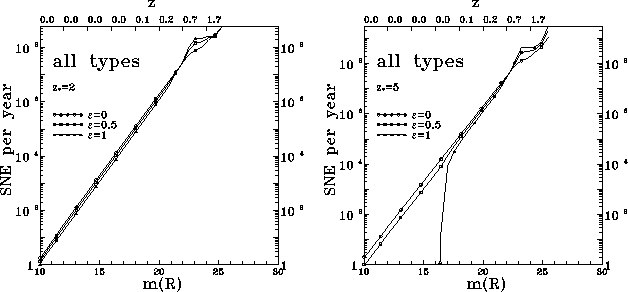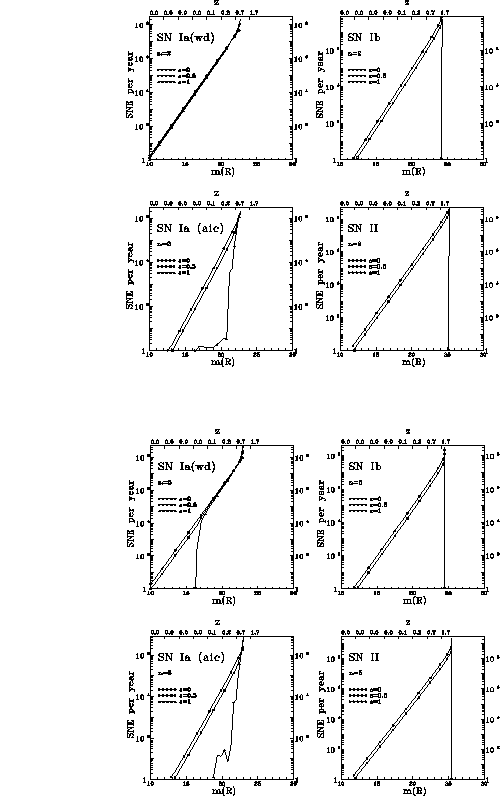Next: Evolution of the Double Up: Evolution of Supernova Explosion Previous: - for Supernova Explosions
![]()
![]()
![]()
![]()
![]()
Next: Evolution
of the Double Up: Evolution
of Supernova Explosion Previous: -
for Supernova Explosions
The resulting ![]() -
- ![]() diagram is presented in Figures 53 and 54
(upper panel) for
diagram is presented in Figures 53 and 54
(upper panel) for ![]() , and in Figsures 53 and 54
(lower panel) for
, and in Figsures 53 and 54
(lower panel) for ![]() .
.

Figure 53: The ![]() -
- ![]() curves for all SN types for
curves for all SN types for ![]() (left-hand panel) and
(left-hand panel) and ![]() (right-hand panel) (Jorgensen et al., 1996).
(right-hand panel) (Jorgensen et al., 1996).

Figure 54: The ![]() -
- ![]() curves for 4 SN types for
curves for 4 SN types for ![]() (upper panel) and
(upper panel) and ![]() (lower panel) (Jorgensen et al., 1996).
(lower panel) (Jorgensen et al., 1996).
As the SN activity in the first generation stellar population must be small at present, the net SN rate in the vicinity of the Sun is approximately proportional to the local density of stars of second generation (or to the star formation rate, which is the same), especially for SN II and SN Ib.
If a ![]() -like star formation of the first generation stars took place, a hump on
the observed
-like star formation of the first generation stars took place, a hump on
the observed ![]() -
-
![]() showing the relative fraction of the first generation stars should be observed.
showing the relative fraction of the first generation stars should be observed.
We conclude that the analysis of the observed ![]() -
- ![]() could potentially provide us with important information on the fraction
of first generation stars (if any), the history of star formation rates
and the parameters of the evolution model.
could potentially provide us with important information on the fraction
of first generation stars (if any), the history of star formation rates
and the parameters of the evolution model.